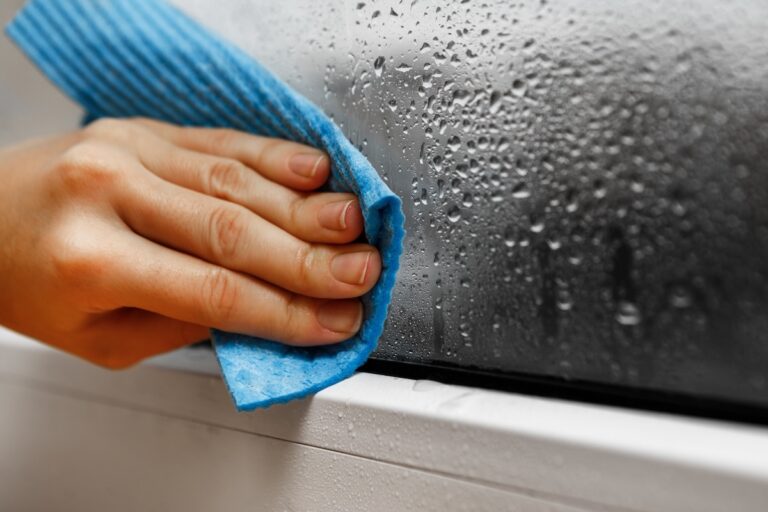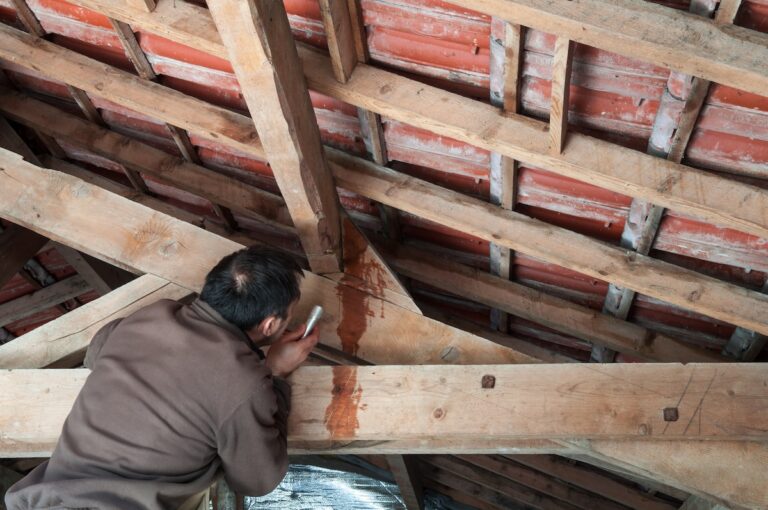There are some sounds we can all universally agree are just kind of unpleasant. Fire alarms, kids screaming during a tantrum, nails on a chalkboard…oh, and the telltale sound of water dripping from your ceiling.
Let’s just admit it: roof leaks are a pain and can be a huge source of stress if you don’t know what to expect. Luckily, our team of roofing experts have compiled the answers to all of your top roof leak questions, including:
- Why am I getting roof leaks?
- What do I do next?
- What are the roof leak repair costs?
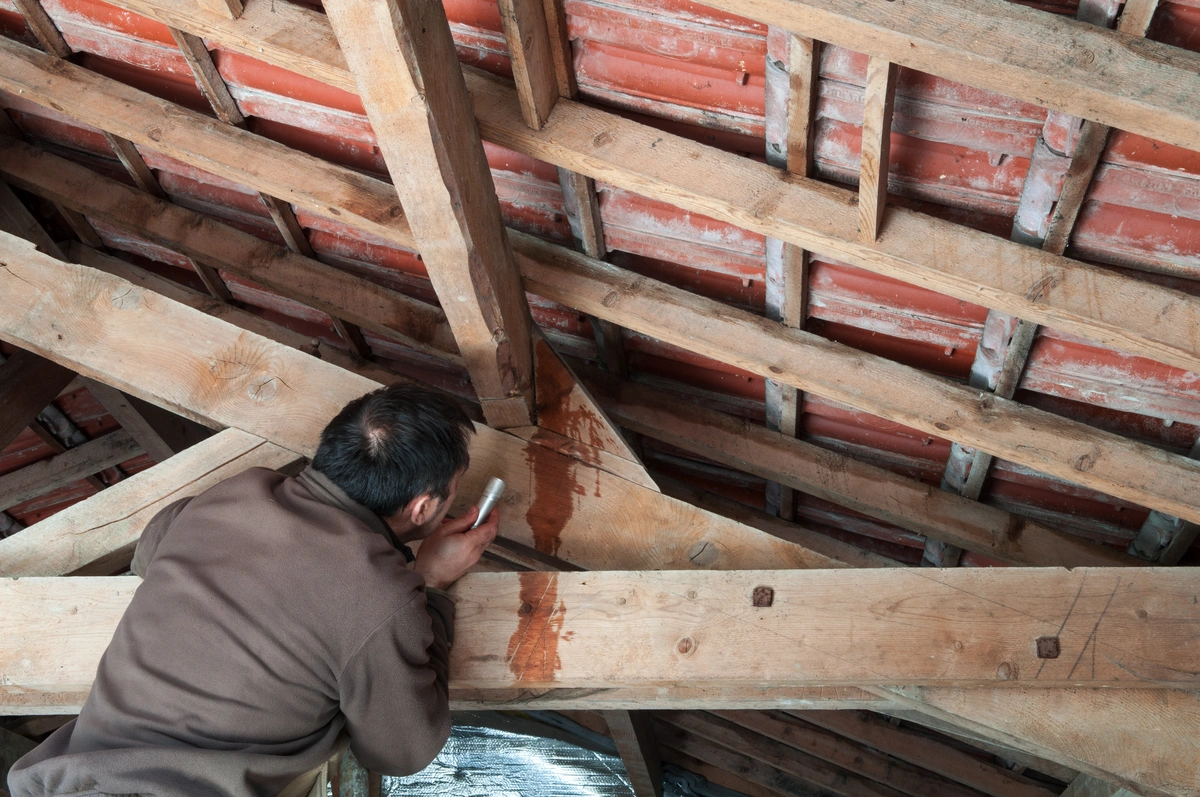
⚠️ Signs of a Roof Leak
The tricky thing about roof leaks is that they aren’t always easy to spot. Sure, we all know the stereotype of a ceiling drip falling into a bucket, but the truth is that you could have a roof leak and not even know it. Here are some of the things you should look out for.
- Musty Odors – Are you smelling a musty, mildewy scent in your house? Is it coming from your attic or crawlspace? Unfortunately, you may be dealing with a roof leak that is leading to mold and mildew growth.
- Water Stains – Water stains can come in many different forms, but they are rarely a good sign. They might appear as brown or yellow stains on your walls and ceilings. Alternatively, you might find that your floors are discolored or warped.
- Frozen Shiners – Shiners are a type of roofing nail that occasionally can be spotted poking out from your attic ceiling. However, if you are noticing signs of frost on them during the colder months, you might be looking at a leaky roof.
🤔 Why Do Roof Leaks Occur?
Now that you know what a roof leak can look like, it is important to understand why roof leaks occur in the first place. This will help you determine the root cause and fix the problem the first time around. Here are some of the top reasons roof leaks form:
- Damaged Shingles – The most common source of a roof leak is damaged shingles. Shingles that have suffered cracks or dents have spaces where water can seep through and damage the underlayment of your roof. Over time, this can lead to a leaky roof.
- Blown Off Shingles – High winds can blow the shingles right off of your roof and into your lawn. It is important to replace missing shingles as soon as possible in order to prevent further damage to your roof.
- Clogged Gutters – While we all know that we should be cleaning our gutters regularly, it can be easy for it to slip your mind. If your gutters are clogged, water cannot flow off of the roof of your home.
- Roof Debris – As the seasons change, it is normal for debris such as leaves and twigs to get trapped on top of your roof. However, it could be making it difficult for water to flow off of your roof.
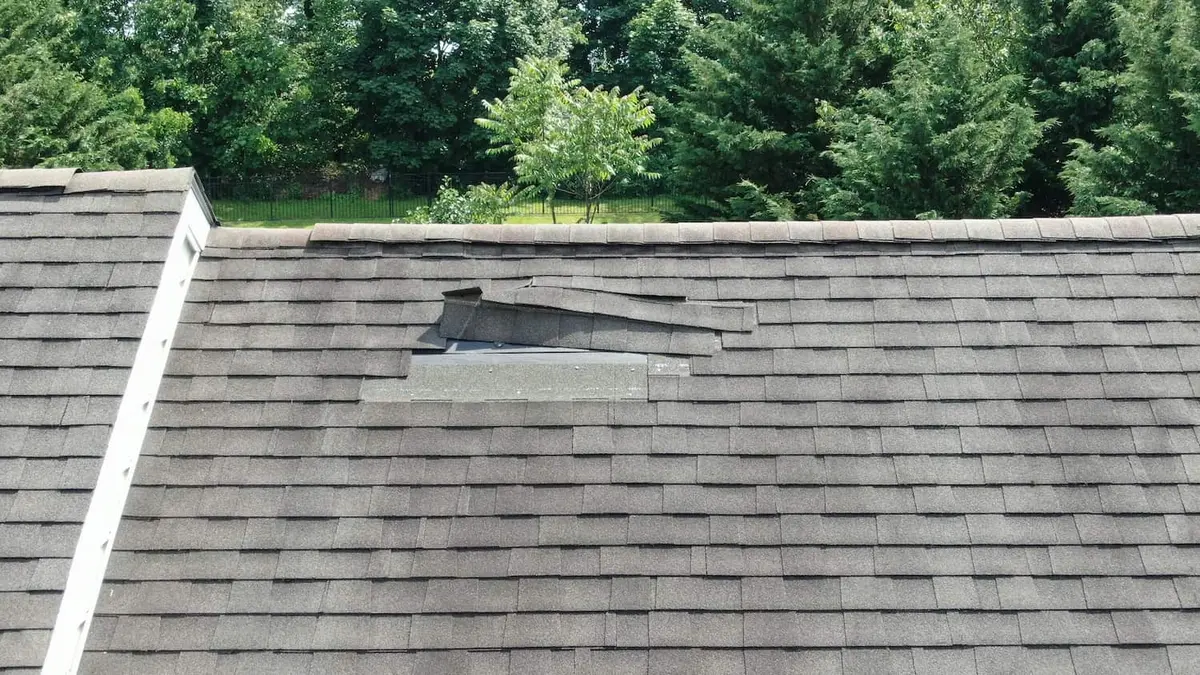
💸 What Are The Roof Leak Repair Costs in Ohio?
For most homeowners, the most stressful part of a roof repair is the cost. Knowing the expected costs in advance can help ease your nerves and allow you to take action.
In Ohio, the cost of roof leak repairs typically ranges between $300 and $1,000 for minor repairs, such as fixing a small leak or replacing a few asphalt shingles. For more extensive repairs involving larger damaged areas or structural issues, the price can range from $1,000 to $7,000, depending on the severity and materials used. In cases of significant damage, a roofing contractor may recommend a full roof replacement, which can cost anywhere from $7,000 to $15,000 or more.
Keep in mind that the type of roofing material plays a role in determining repair costs. Most residential homes in Ohio use asphalt shingles, which are affordable and relatively easy to repair. However, if you have a more specialized roofing material, such as metal or tile, the costs may be higher. Always consult with a professional roofing contractor for a detailed estimate tailored to your specific situation.
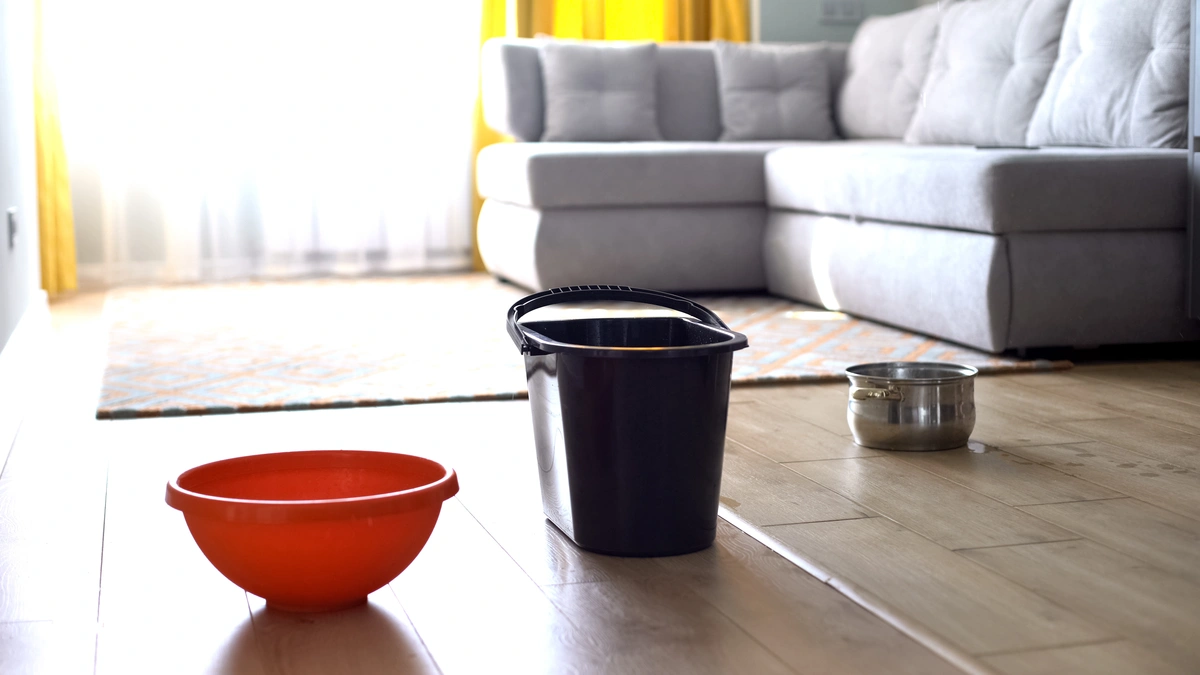
👉 5 Things to Do When You Spot a Roof Leak
Dealing with a leaking roof becomes much less stressful when you have a plan in place. If it is time for you to invest in a roof repair, here are the steps you should take.
1) Protect the Area
The first and most important step is to protect the area onto which your roof is leaking. As soon as you can, wipe up the water, and place a bucket or bowl underneath in order to catch the drips. We also recommend laying out towels around the area to avoid further water damage.
2) Locate the Source
If you can, it is a good idea to try and locate the source of the leak. This will save your contractor time and help you get a sense if there are any emergency actions that you can take to stop the leak yourself.
3) Document
For insurance purposes, you’ll want to thoroughly document the leaking area. This means taking pictures from a variety of angles and videos as well. This will help your insurance provider assess your claim.
4) Contact a Roofer
Now is the time to reach out to your local roofer. They will be able to properly assess the situation and come up with a plan of action to get your roof back in tip-top shape.
5) Contact Your Insurance Provider
Once you have contacted a professional roofer, you’ll want to talk with your insurance company. If the leak occurred due to environmental damage from things like hail or high winds, they may be able to cover a portion of the roof repair costs.
🛠️ Types of Roof Leak Repairs
When dealing with a roof leak, the type of repair needed can vary depending on the cause and severity of the damage. Addressing the issue promptly with the appropriate repair method is crucial to prevent further damage to your home. Here are some common methods used to fix roof leaks:
Patching
Patching is one of the most common and cost-effective methods for fixing minor roof leaks. This involves identifying the exact location of the leak and applying a waterproof patch or roofing sealant to the affected area. Patching is typically used for small holes, cracks, or punctures caused by impacts, such as fallen branches. While it is a quick and straightforward solution, it’s best suited for temporary repairs or minor leaks. Professional roofers will ensure that the surrounding area is properly cleaned and prepared to ensure the patch adheres securely.
Shingle Replacement
For homes with asphalt shingle roofs, leaks may occur when shingles are cracked, curled, or missing altogether. Replacing the damaged shingles is a common repair method in this scenario. Individual damaged shingles can be carefully removed and replaced with new ones that match the existing roof. This is a relatively simple and affordable repair option, and it helps to restore the roof’s protective barrier.
Flashing Repair or Replacement
Flashing, the thin material used to direct water away from critical roof areas such as chimneys, vents, and skylights, can deteriorate over time. Damaged or corroded flashing often leads to leaks. Repairing or replacing the flashing involves sealing gaps and, if necessary, installing new flashing material to ensure a watertight seal around these vulnerable spots.
Repairing Roof Membranes
For flat or low-slope roofs, leaks often develop due to tears, punctures, or wear in the roof membrane. Repairs may involve applying a roof coating or a membrane patch to restore the roof’s integrity. For larger areas, professional roofers may replace entire sections of the membrane to stop the leak.
Gutter Maintenance
While not a direct roof repair, clogged or damaged gutters can lead to water pooling and eventual leaks. Clearing out debris, repairing gutter seams, or replacing sections of damaged gutters can help prevent leaks caused by improper water drainage.
Selecting the right repair method depends on factors such as the type of roof, the scale of the damage, and your budget. Consulting a professional roofing contractor ensures that the cause of the leak is correctly identified and addressed with the most effective and lasting solution.
🙌 Get the Help You Need!
Not sure where to start? Johnson Restoration can help. Our team of fully licensed and bonded roofing pros have the knowledge to stop your roofing problem at the source and keep your roof safe for years to come. Contact us today to get started with your roof repair!




